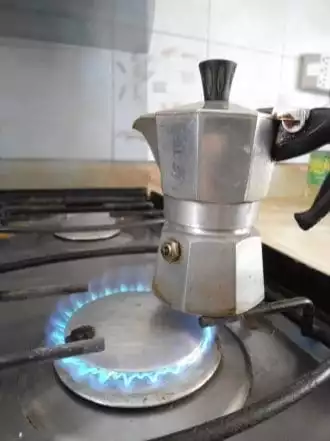In our cleaning methods, different types of coffee makers, such as those made of stainless steel, require unique care approaches. This includes beloved four-cup coffee makers, with the optimal choice being the use of natural ingredients like vinegar and baking soda. Not only does this cleaning method effortlessly remove burnt traces, but it also ensures your coffee maker looks revitalized. For those seeking the best 4 cup coffee makers, beyond considering aesthetics and performance, the correct cleaning method is equally crucial.
If your coffee maker is made of stainless steel, baking soda is a valuable ally. However, caution is necessary, as overly abrasive products can damage the stainless steel. To preserve the original appearance of your coffee maker, choose suitable cleaning methods.
In general, a good approach is to first immerse the burnt element (in this case, a coffee maker) in a solution of water and natural acid. Here’s a step-by-step method to try:
- Pour equal parts water and vinegar into your coffee maker (for example, one cup of water and one cup of vinegar). If the burn is on the exterior, pour this mixture into a larger container and then immerse the coffee maker in it.
- Add a tablespoon of baking soda to the mixture.
- Place the coffee maker (or the container holding the coffee maker) on the heat and let it boil. The goal is to bring the solution to a boil. Some foam may appear – don’t be alarmed; it’s normal.
- Once it’s hot enough and a few minutes have passed, try scraping off the burns. Use a spatula or a similar tool, but be careful not to scratch the surface. If they don’t come off, boil it a bit longer to soften the dirt or burn completely.
- After scrubbing and removing part of the burnt surface, remove the coffee maker from the heat.
- If the burns were inside the coffee maker, fill it with baking soda. Ensure that the burnt stains are completely covered.
- Scrub or rub again until the entire burnt surface has disappeared.
- Finally, rinse the coffee maker and dry it well. Don’t let it stay wet for too long; prompt drying is essential.
While this procedure involves multiple steps, it can be summarized as softening burns with a natural acidic solution (water and vinegar), to which baking soda is added.
Other Similar Options or Alternatives:
- Boil the coffee maker with only water and vinegar (in the previously mentioned proportions). Once the water has boiled, turn off the heat and let the coffee maker soak in the water for 24 hours. Subsequently, wash or scrub to try to remove the burnt part. This method, though slower, is more effective if time is not an issue.
- For thinner burnt stains, try polishing and cleaning the stainless steel. Create a paste from three tablespoons of baking soda, adding enough water to make the mixture consistent (not too liquid). Once the paste is ready, rub it on your coffee maker with a sponge or cloth, and rinse thoroughly.
- Another trick for cleaning a burnt coffee maker is to rub the burnt surface with a ball of aluminum foil. While this works on all surfaces, try it only if the coffee maker is made of steel, as aluminum ones may get scratched. Less effort is required if you’ve previously soaked the burnt surface in the acidic solution or vinegar mentioned earlier.

What to Do After Cleaning the Burnt Surface of My Coffee Maker?
Since you’re already cleaning and taking care of your coffee maker, it’s best to take precautions and polish it to look like new. After cleaning a burnt coffee maker, eliminate streaks and small scratches from the surface with olive oil or even sparkling water. Yes, natural elements are the best to avoid damaging the surface during cleaning.
How to do it? Simply dampen a new cloth or sponge with oil or sparkling water and rub the surface you want to polish. If you were not aware of this trick for polishing stainless steel, it’s time to put it into practice.
How to Clean a Burnt Aluminum Coffee Maker
Finally, let’s attempt to clean aluminum coffee makers. Aluminum is not too difficult to clean, but it has a significant drawback: it scratches easily. So, caution is crucial, especially because burnt stains don’t always come off at the first attempt. Never use chemicals or strong scrubbers (steel wool, etc.) to clean your aluminum coffee maker.
As a first step, immerse the coffee maker in hot soapy water to soften the dirt. Then, start cleaning the burnt stains as usual.
If this doesn’t work, move on to plan B: boil water and mix it with some natural acidic solution (white vinegar, lemon juice, etc.). You can use two tablespoons of acid per 250 ml of water as a reference. Immerse your coffee maker in this mixture and wait a few minutes until the water cools. Then, try cleaning the coffee maker again with a brush and a little soap. This process is similar to what we described earlier for stainless steel coffee makers.